
Code_Aster
®
Version
5.0
Titrate:
SDLV122- Extrapolation of local measurements on a complete model (3D)
Date:
04/03/02
Author (S):
S. AUDEBERT, P. HERMANN
Key
:
V2.04.122-A
Page:
1/8
Manual of Validation
V2.04 booklet: Linear dynamics of the voluminal structures
HT-62/01/012/A
Organization (S):
EDF/RNE/AMV, CS IF
Manual of Validation
V2.04 booklet: Linear dynamics of the voluminal structures
V2.04.122 document
SDLV122 - Extrapolation of local measurements
on a complete model (3D)
Summary:
It is about a linear test of dynamics 3D.
The goal is to test control PROJ_MESU_MODAL in the case of a system 3D. This control allows
to project experimental dynamic transitory answers in a certain number of points on a basis
modal of a numerical modeling.
This test contains 2 modelings:
·
projection (of stresses) is done on a basic concept modal of type [mode_meca],
·
projection (of stresses) is done on a basic concept modal of type [base_modale].
For 2 modelings, the provided experimental measurements are identical and make it possible to test
seek nodes in opposite and the taking into account of a local orientation.
In both cases, the reference solution is obtained by a direct calculation with Code_Aster; projection
is realized in the successful outcome where the number of modes is equal to the number of measurements. Answers in
stress obtained after projection are identical to the stresses of reference provided in data.
For modeling A, the answers in displacements and deformation obtained after projection are in
perfect adequacy with the reference solutions. Values speeds and the accelerations deduced from
identified modal contributions are close to those obtained by direct calculation. Weak variations
noted are due to the errors of approximation generated by the determination via a linear diagram in
time speeds and accelerations.
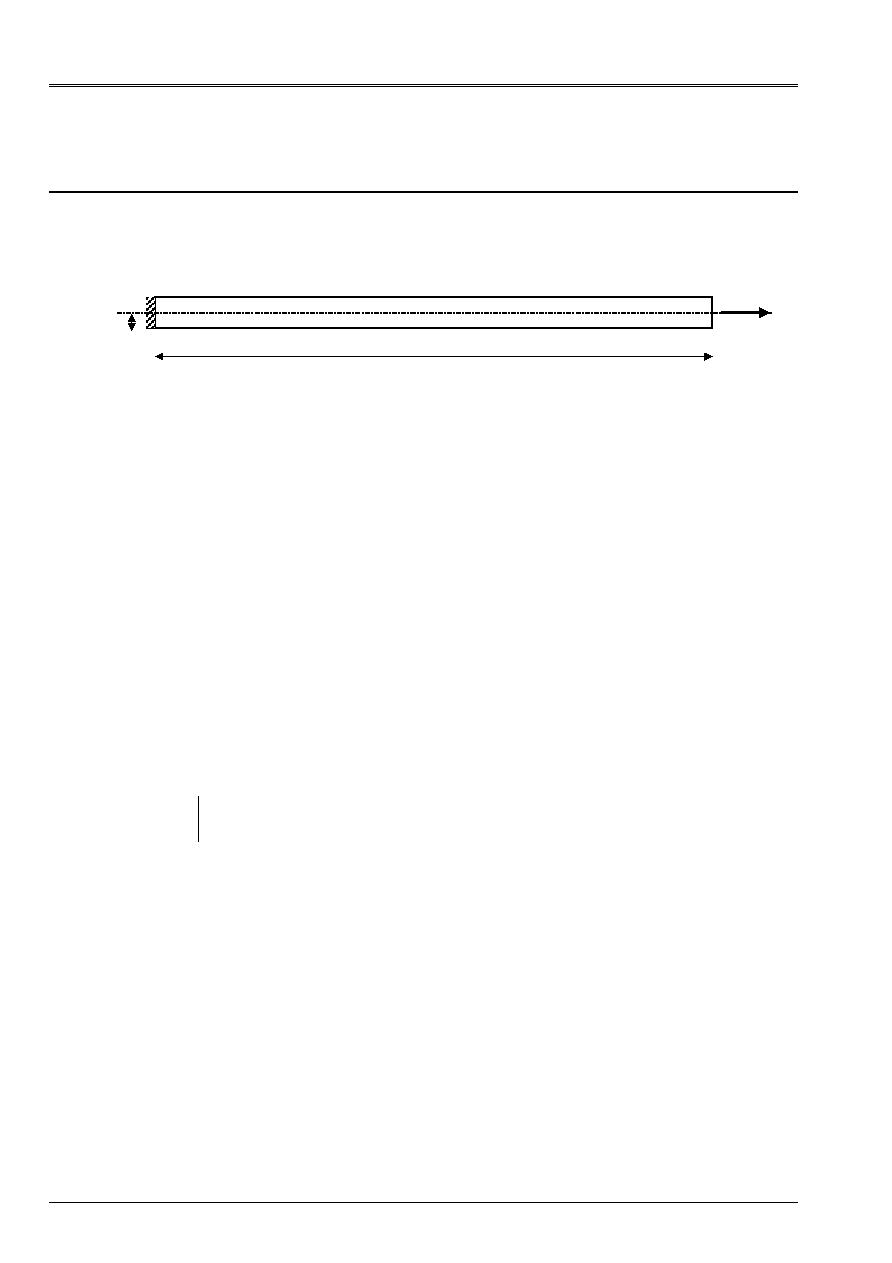
Code_Aster
®
Version
5.0
Titrate:
SDLV122- Extrapolation of local measurements on a complete model (3D)
Date:
04/03/02
Author (S):
S. AUDEBERT, P. HERMANN
Key
:
V2.04.122-A
Page:
2/8
Manual of Validation
V2.04 booklet: Linear dynamics of the voluminal structures
HT-62/01/012/A
1
Problem of reference
1.1 Geometry
Let us consider the embed-free slim cylindrical bar described below:
Length
:
L
= 4 m
Radius
:
R
= 0.1 m
End 1: embedded (
X
=0)
End 2: free (
X
=l)
1.2
Properties of materials
The characteristics of material are as follows:
Young modulus:
E
= 2.1 10
11
AP
Poisson's ratio:
= 0.3
Density:
= 7800 kg/m
3
1.3
Boundary conditions and loading
The boundary condition is the embedding of end 1 of the bar. This embedding is of type
beam to allow the effects Poisson on the section.
The loading applied for the calculation of answer is a thrust load, constant in traction, distributed
on the section of end 2:
P T
T
P
T
()
NR
=
<
=
0
0
10
0
0
6
if
if
P
(
T
)
R
L
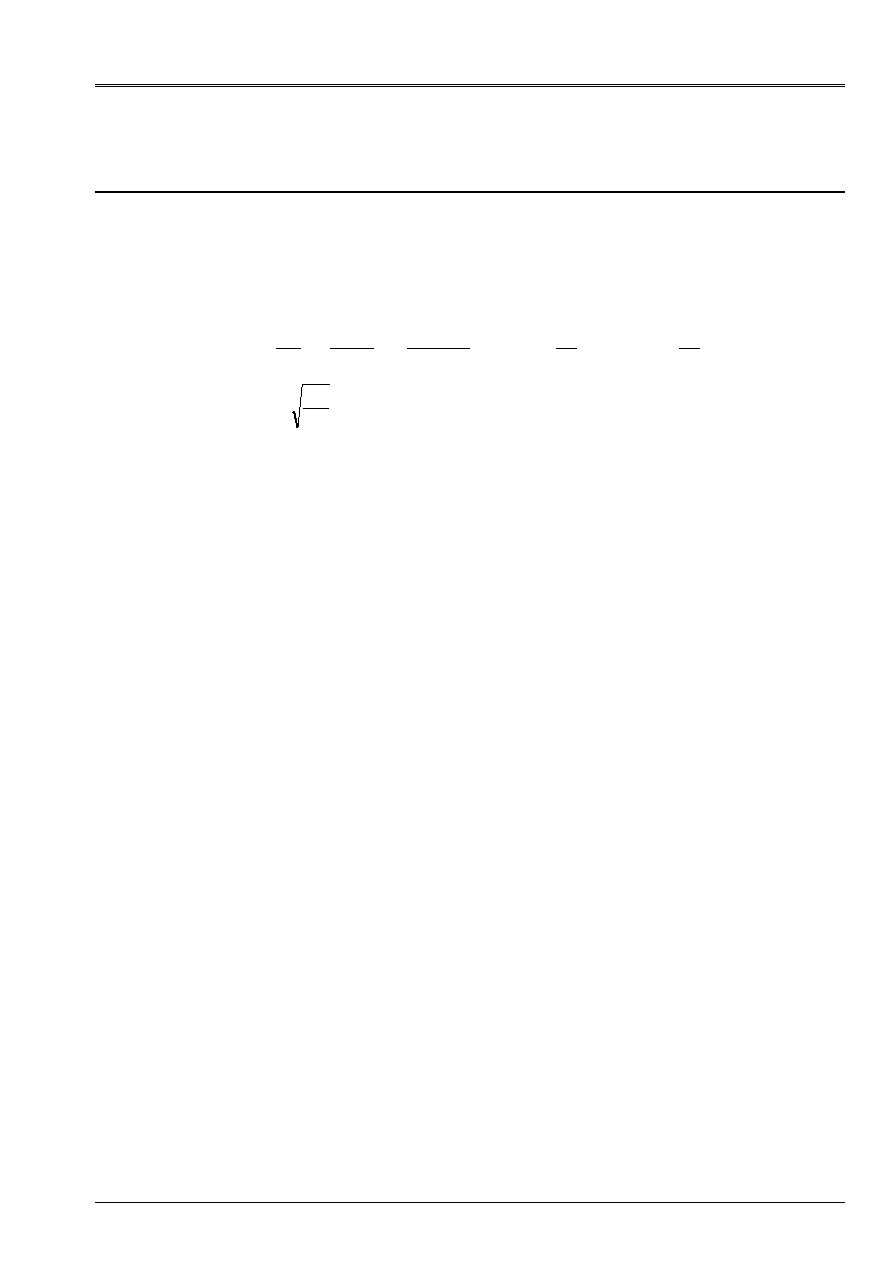
Code_Aster
®
Version
5.0
Titrate:
SDLV122- Extrapolation of local measurements on a complete model (3D)
Date:
04/03/02
Author (S):
S. AUDEBERT, P. HERMANN
Key
:
V2.04.122-A
Page:
3/8
Manual of Validation
V2.04 booklet: Linear dynamics of the voluminal structures
HT-62/01/012/A
2
Reference solutions
2.1
Method of calculation used for the reference solution
·
Analytical solution:
An analytical solution of this problem exists. It is described in:
In this case, the solution by modal superposition of this problem is written:
()
()
(
)
(
)
(
)
U X T
P
EA X
P I
EA
S
S
X
I
S
C
I T
C
EA
m
S
S
,
sin
cos
:
:
=
-
-
-
-
-
=
-
=
0
0
2
1
2
1
8
1
2
1
2
1 2
2
1 2
with
propagation velocity of wave in the bar
·
Adopted reference solution:
The analytical solution utilizing an infinite sum on the modes, it is preferable that
reference solution and the solution with projection corresponds to the same configuration, with
the same number of modes.
Moreover, to avoid problems involved in the discretization of the numerical mesh, the solution of
reference selected is the answer provided by the direct calculation carried out with Code_Aster with
order DYNA_TRAN_MODAL.
2.2
Results of reference
For modeling A, the comparison of the results relates to displacements, speeds,
accelerations, strains and stresses along the axis
X
, of the nodes
N2
and
NR 4
at 3 moments
different.
NR 4
corresponds to a node of measurement and
N2
is not one.
For modeling B, the comparison of the results relates to the stresses of the nodes
NR 3
and
NR 4
at 3 different moments.
2.3
Uncertainty on the solution
The selected reference makes it possible to draw aside uncertainties related to the discretization of the numerical mesh.
The number of modes of the base of projection is equal to the number of measurements, therefore the solution of
the inversion is exact (in opposition to an approximate solution of a generalized opposite problem).
If projection is done on a concept of the type [mode_meca], modal bases of
reference solution and solution obtained by projection are identical, the answers in
displacements, strains and stresses obtained must thus be similar to the answers of
reference. Some errors of approximation can appear on speeds and accelerations which
are determined by a linear diagram in time.
If projection is done on a concept of the type [base_modale], modal bases of
reference solution and solution obtained by projection contain the same number of modes
but are different. The calculation of reference not being possible on a concept of the type
[base_modale], the comparison of the results relates only to answers corresponding to
provided measurements.
2.4 Bibliography
[1]
Mr. GERADIN, D. RIXEN: Theory of the vibrations - Application to the dynamics of the structures -
Edition MASSON 1993
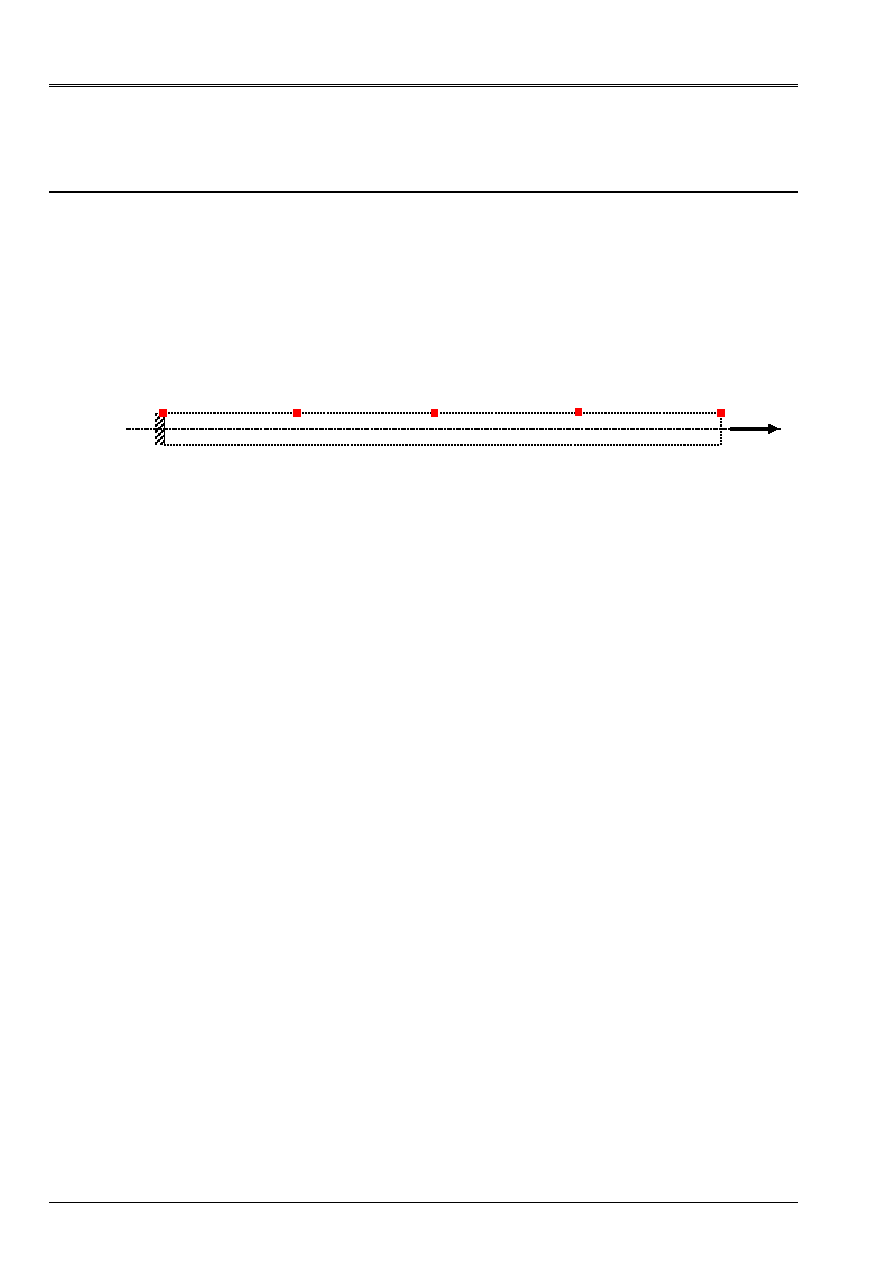
Code_Aster
®
Version
5.0
Titrate:
SDLV122- Extrapolation of local measurements on a complete model (3D)
Date:
04/03/02
Author (S):
S. AUDEBERT, P. HERMANN
Key
:
V2.04.122-A
Page:
4/8
Manual of Validation
V2.04 booklet: Linear dynamics of the voluminal structures
HT-62/01/012/A
3 Modeling
With
3.1
Characteristics of modeling and the mesh
·
Numerical mesh:
The numerical mesh is carried out with I-DEAS version Master Series 5. It comprises 2667 nodes
and 3328 meshs of the linear type 3D.
·
Experimental mesh:
The mesh of measurement includes/understands only 5 specific elements and 5 nodes positioned like
indicates the following figure:
3.2
Characteristics of the measurements
The provided experimental measurements are:
·
With the nodes
NR 3
,
NR 4
and
N5
:
The data are the axial stresses, applied in the direction
X
.
The sampling of time is constant: initial time is 0 S, the pitch of time is 10
5
S and it
a many moments are 1001 (i.e until a final time of 0.01 S).
The values result from the direct calculation carried out with Code_Aster.
3.3
Characteristics of the modal base
The modes are stored in a concept of the type [mode_meca], containing the first three modes
dynamic of traction. These modes are obtained by locking transverse displacements
(i.e according to DY and DZ) of the nodes of fiber of neutral and the nodes of the higher line (
X
=0. to 4.
y
=0.1 and
Z
=0.). Their Eigen frequencies (326.5 Hz, 980.0 Hz and 1634.5 Hz) are close to
Eigen frequencies of traction analytically calculated (324.3 Hz, 972.9 Hz and 1621.5 Hz).
P
(
T
)
NR
3 (L/2=2. 0. 0.)
NR
1 (0. 0. 0.)
NR
4 (3l/4=3. 0. 0.)
NR
2 (L/4=1. 0. 0.)
NR
5 (l=4. 0. 0.)
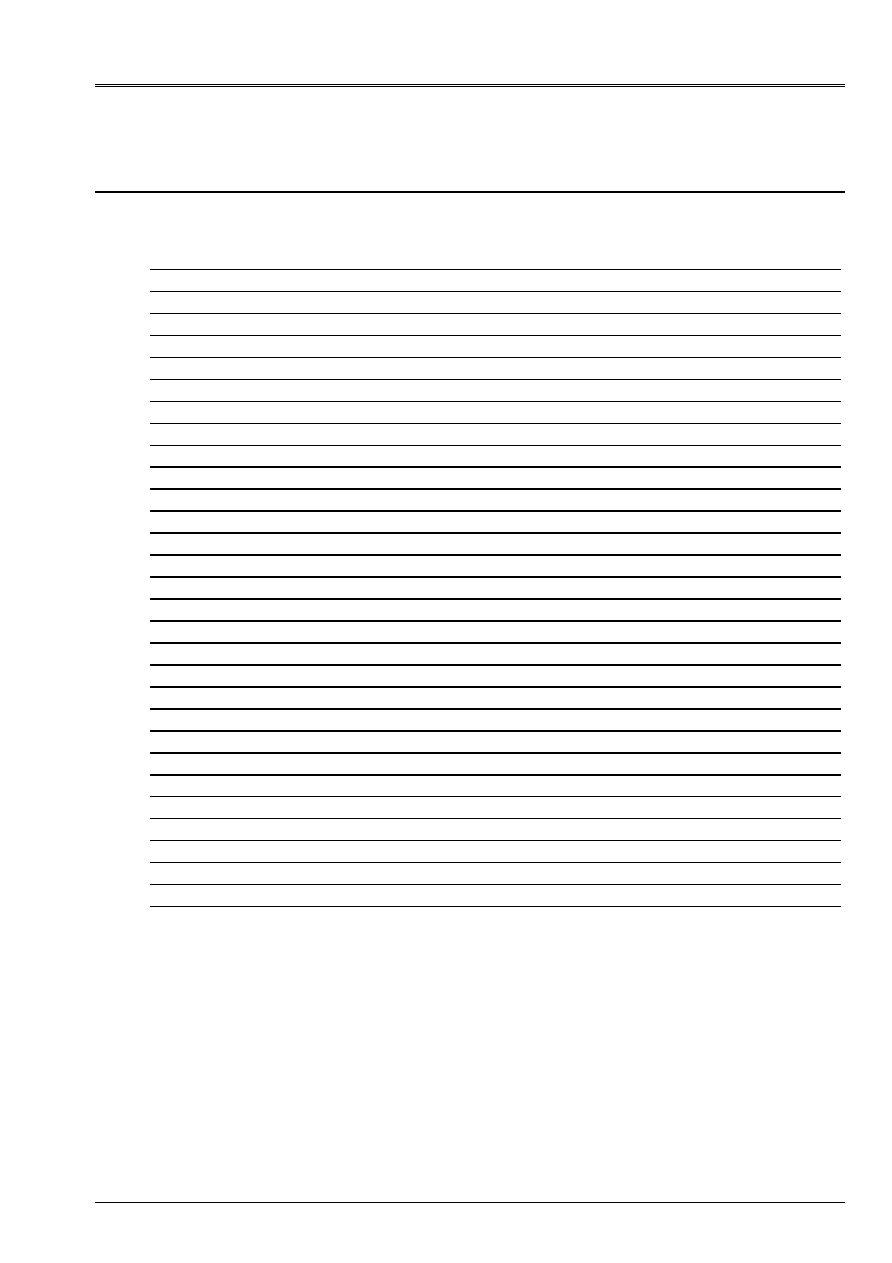
Code_Aster
®
Version
5.0
Titrate:
SDLV122- Extrapolation of local measurements on a complete model (3D)
Date:
04/03/02
Author (S):
S. AUDEBERT, P. HERMANN
Key
:
V2.04.122-A
Page:
5/8
Manual of Validation
V2.04 booklet: Linear dynamics of the voluminal structures
HT-62/01/012/A
4
Results of modeling A
4.1 Values
tested
Identification Reference
Code_Aster difference
with
T
= 9. 10
4
S
2.686 10
4
2.686
10
4
0.00
%
DEPL_X
with the node
NR
2 with
T
= 17. 10
4
S
3.074 10
4
3.074
10
4
0.00
%
(m)
with
T
= 25. 10
4
S
1.446 10
5
1.446
10
5
0.01
%
with
T
= 9. 10
4
S
5.793 10
4
5.793
10
4
0.00
%
DEPL_X
with the node
NR
4 with
T
= 17. 10
4
S
9.160 10
4
9.160
10
4
0.00
%
(m)
with
T
= 25. 10
4
S
3.095 10
4
3.095
10
4
0.00
%
with
T
= 9. 10
4
S
6.221 10
1
5.855
10
1
5.88
%
VITE_X
with the node
NR
2 with
T
= 17. 10
4
S
4.683 10
2
4.094
10
2
12.59
%
(m/s)
with
T
= 25. 10
4
S
3.542 10
1
3.168
10
1
10.56
%
with
T
= 9. 10
4
S
8.056 10
1
8.140
10
1
1.04
%
VITE_X
with the node
NR
4 with
T
= 17. 10
4
S
3.556 10
1
3.800
10
1
6.87
%
(m/s)
with
T
= 25. 10
4
S
8.638 10
1
8.708
10
1
0.82
%
with
T
= 9. 10
4
S
3.633 10
+3
3.653
10
+3
0.55
%
ACCE_X
with the node
NR
2 with
T
= 17. 10
4
S
6.337 10
+2
7.550
10
+2
19.14
%
(m/s
2
)
with
T
= 25. 10
4
S
3.801 10
+3
3.778
10
+3
0.62
%
with
T
= 9. 10
4
S
8.655 10
+2
9.636
10
+2
11.34
%
ACCE_X
with the node
NR
4 with
T
= 17. 10
4
S
2.387 10
+3
2.371
10
+3
0.69
%
(m/s
2
)
with
T
= 25. 10
4
S
6.355 10
+2
5.019
10
+2
21.02
%
with
T
= 9. 10
4
S
1.957 10
4
1.957
10
4
0.00
%
EPXX
with the node
NR
2 with
T
= 17. 10
4
S
3.015 10
4
3.015
10
4
0.00
%
(m)
with
T
= 25. 10
4
S
5.422 10
5
5.422
10
5
0.00
%
with
T
= 9. 10
4
S
1.822 10
4
1.822
10
4
0.00
%
EPXX
with the node
NR
4 with
T
= 17. 10
4
S
2.611 10
4
2.611
10
4
0.00
%
(m)
with
T
= 25. 10
4
S
1.681 10
4
1.681
10
4
0.00
%
with
T
= 9. 10
4
S
5.012 10
+7
5.012
10
+7
0.00
%
SIXX
with the node
NR
2 with
T
= 17. 10
4
S
7.717 10
+7
7.717
10
+7
0.00
%
(AP)
with
T
= 25. 10
4
S
1.390 10
+7
1.390
10
+7
0.00
%
with
T
= 9. 10
4
S
4.650 10
+7
4.650
10
+7
0.00
%
SIXX
with the node
NR
4 with
T
= 17. 10
4
S
6.671 10
+7
6.671
10
+7
0.00
%
(AP)
with
T
= 25. 10
4
S
4.293 10
+7
4.293
10
+7
0.00
%
4.2 Parameters
of execution
Version: NEW5 (5.04)
Machine: CLASTER
Overall dimension memory: 300 Mo
Time CPU To use: 146.84 seconds
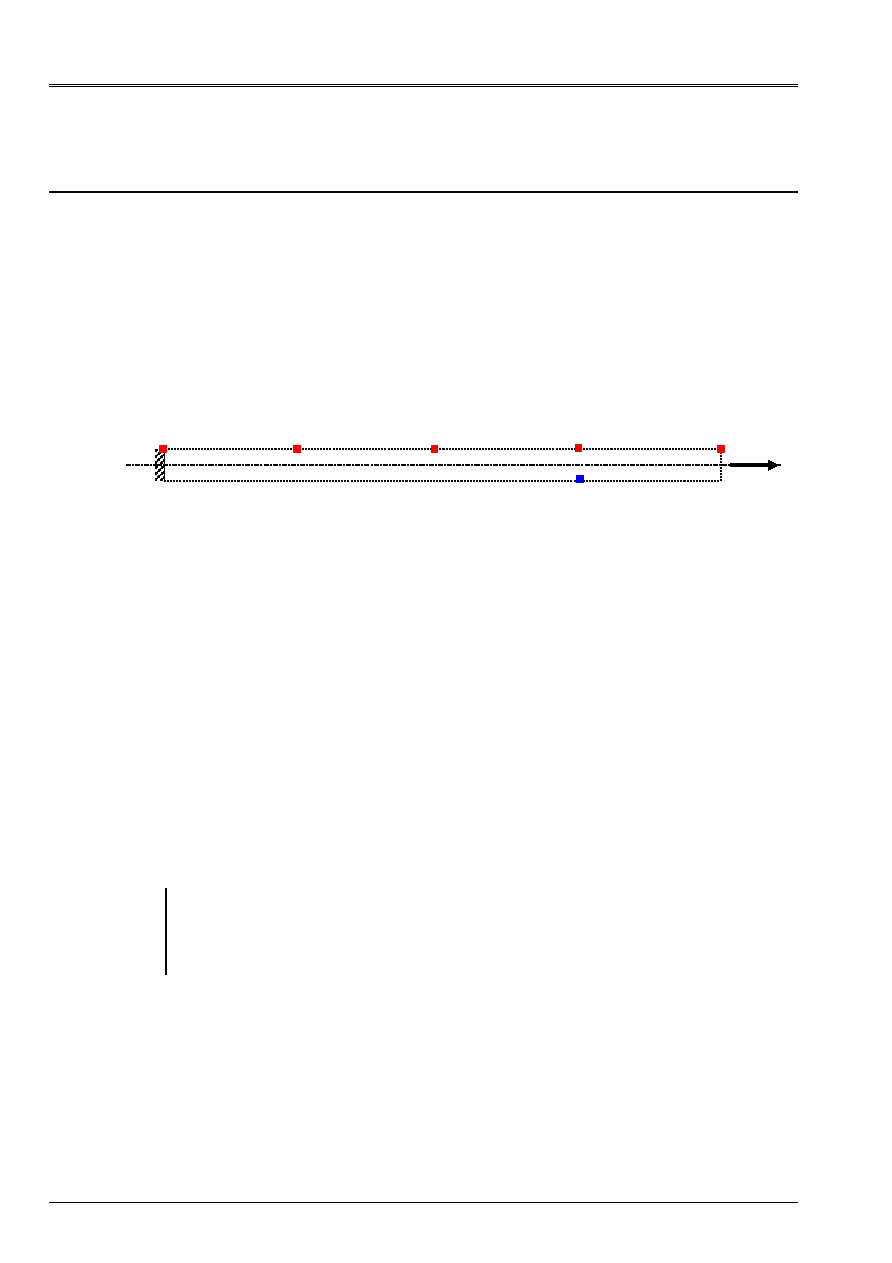
Code_Aster
®
Version
5.0
Titrate:
SDLV122- Extrapolation of local measurements on a complete model (3D)
Date:
04/03/02
Author (S):
S. AUDEBERT, P. HERMANN
Key
:
V2.04.122-A
Page:
6/8
Manual of Validation
V2.04 booklet: Linear dynamics of the voluminal structures
HT-62/01/012/A
5 Modeling
B
5.1
Characteristics of modeling and the mesh
·
Numerical mesh:
The numerical mesh is identical to that used in the preceding case. It is carried out with
I-DEAS version Master Series 5 and comprises 2667 nodes and 3328 meshs of the linear type 3D. One
group comprising only one node is added to be used as interface.
·
Experimental mesh:
The mesh of measurement includes/understands only 5 specific elements and 5 nodes positioned like
indicates the following figure:
5.2
Characteristic of the measurements
The provided experimental measurements are:
·
With the nodes
NR
NR
3
4
,
and
N5
:
The data are the axial stresses, applied in the direction
X
.
The sampling of time is constant: initial time is 0 S, the pitch of time is 10
5
S and it
a many moments are 1001 (i.e until a final time of 0.01 S).
The values result from the direct calculation carried out with Code_Aster.
5.3
Characteristics of the modal base
The modes are stored in a concept of the type [base_modale], containing the two first
dynamic modes of traction and static mode with the node
NR
3INF for the degree of freedom DX.
The interface is of Craig-Bampton type. The base thus contains on the whole 3 modes.
Note:
The number of modes being very reduced, the solution depends on the modal base. However, modes
determined for this modeling are not the same ones as those of the modal base of
reference, and it is not possible to carry out direct calculation with Code_Aster on one
concept [base_modale]. Only the answers corresponding to the provided measurements can
thus to be validated. No comparison can be carried out on the other answers.
P (T)
N3 (L/2=2. 0.1 0.)
N1 (0. 0.1 0.)
N4 (3l/4=3. 0.1 0.)
N2 (L/4=1. 0.1 0.)
N5 (l=4. 0.1 0.)
N3INF
(3l/4=3. - 0.1 0.)

Code_Aster
®
Version
5.0
Titrate:
SDLV122- Extrapolation of local measurements on a complete model (3D)
Date:
04/03/02
Author (S):
S. AUDEBERT, P. HERMANN
Key
:
V2.04.122-A
Page:
7/8
Manual of Validation
V2.04 booklet: Linear dynamics of the voluminal structures
HT-62/01/012/A
6
Results of modeling B
6.1 Values
tested
Identification Reference
Code_Aster difference
with
T
= 9. 10
4
S
3.416 10
+7
3.416
10
+7
0.00
%
SIXX
with the node
NR
3 with
T
= 17. 10
4
S
8.046 10
+7
8.046
10
+7
0.00
%
(AP)
with
T
= 25. 10
4
S
4.251 10
+7
4.251
10
+7
0.00
%
with
T
= 9. 10
4
S
4.650 10
+7
4.650
10
+7
0.00
%
SIXX
with the node
NR
4 with
T
= 17. 10
4
S
6.671 10
+7
6.671
10
+7
0.00
%
(AP)
with
T
= 25. 10
4
S
4.293 10
+7
4.293
10
+7
0.00
%
6.2 Parameters
of execution
Version: NEW5 (5.04)
Machine: CLASTER
Overall dimension memory: 300 Mo
Time CPU To use: 147.42 seconds

Code_Aster
®
Version
5.0
Titrate:
SDLV122- Extrapolation of local measurements on a complete model (3D)
Date:
04/03/02
Author (S):
S. AUDEBERT, P. HERMANN
Key
:
V2.04.122-A
Page:
8/8
Manual of Validation
V2.04 booklet: Linear dynamics of the voluminal structures
HT-62/01/012/A
7
Summary of the results
For two modelings, the answers in stresses obtained after projection are identical
with the stresses of reference obtained by direct calculation with Code_Aster and provided in data.
For modeling A, the answers in displacements and deformation are in perfect adequacy
with the reference solutions. Values speeds and accelerations obtained afterwards
projection are close to those obtained by direct calculation. The weak noted variations are due
with the errors of approximation generated by the determination by a linear diagram in time of
speeds and accelerations.
The cases where the number of modes is not equal to the number of measurements are not tested (problem
opposite generalized); in particular, the method of regularization of Tikhonov is not tested.







